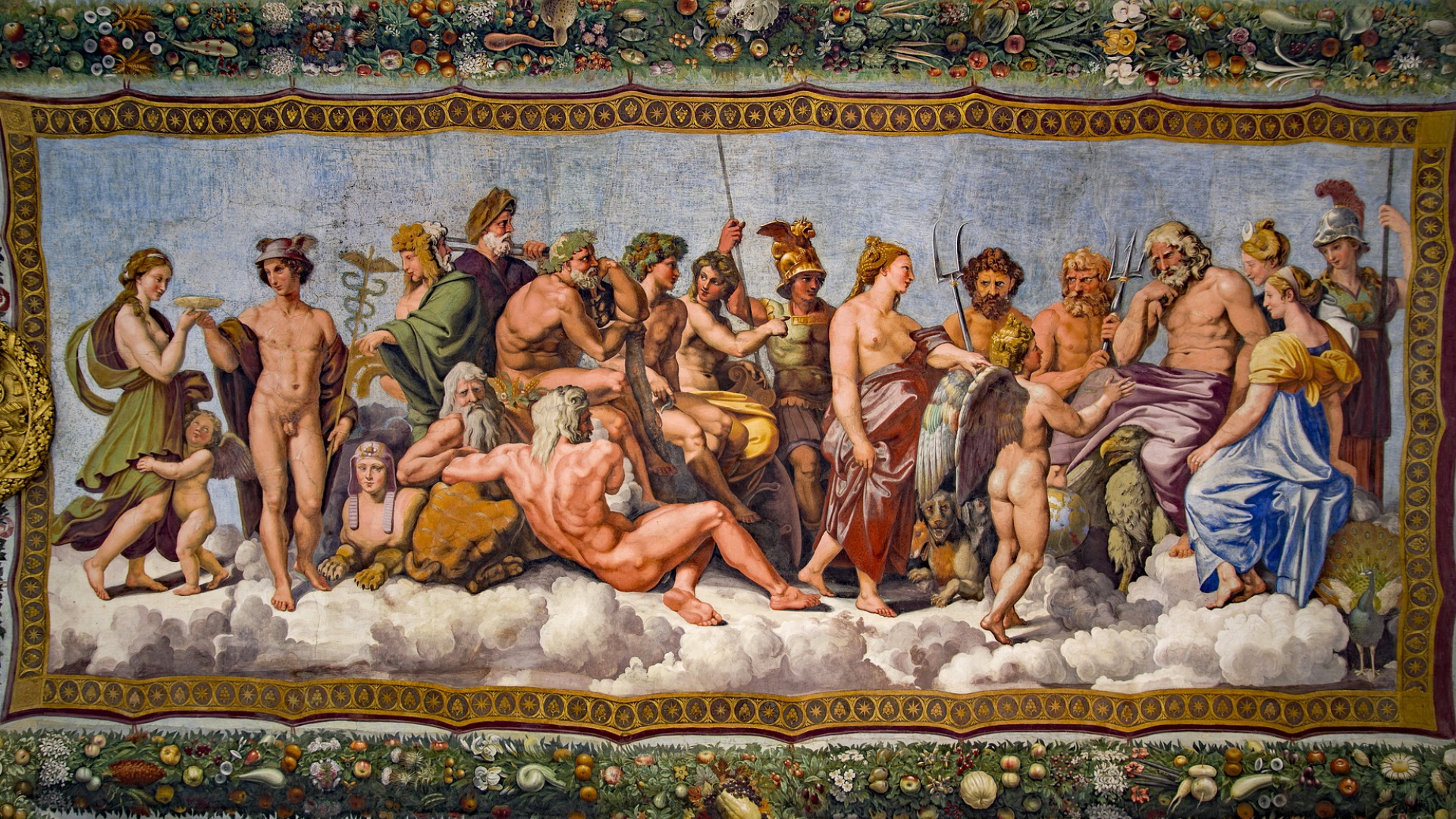
The "popular" Rione XIII - Trastevere is the largest in Rome and is much loved by citizens and tourists who want to rediscover the atmosphere of the Rome of yesteryear.
The name of the district derives from the Latin trans Tiberim, the name of the ancient Augustan "regio" and means "beyond the Tiber". The beating heart of the city had developed on the other bank of the river.
Among the monuments, churches, and places of highest interest, you can find Palazzo Corsini alla Lungara, which, together with Palazzo Barberini, constitutes the National Museum of Ancient Art, and in which garden is the Botanical Garden of Rome, Villa Farnesina, one of the most successful and harmonious creations of the Italian Renaissance in which you can admire the frescoes by Raffaello Sanzio and his school, the beautiful Basilica of Santa Maria in Trastevere, probably the first official place of Christian worship in Rome, the Basilica of Santa Cecilia with the poignant statue of the Saint by Stefano Maderno, the Sanctuary of San Francesco a Ripa Grande with the extraordinary recumbent statue depicting the Ecstasy of the Blessed Ludovica Albertoni by Gian Lorenzo Bernini, the Museum of Roma in Trastevere which houses various materials that tells the history of the Roman daily life and traditions, the fountain-monument to Giuseppe Gioachino Belli created thanks to a fund-raising to honor of the great Roman poet, the Fontana dell'Acqua Paola on the Janiculum hill, the magical "Fontanone" so loved by the Romans, the Museum of the Roman Republic and Garibaldi Remembrance, which traces the history, places, and characters of the Roman Risorgimento such as Giuseppe Garibaldi, his partner Anita, and Goffredo Mameli, who fought against the French army in this area of Rome.
Furthermore, from the Janiculum hill, near the statue of Giuseppe Garibaldi, you can enjoy a double, astonishing view of the historic center of Rome and of the dome of St. Peter's Basilica in the Vatican.
Since 1904, however, under the Belvedere, every day at 12 o'clock, three soldiers fire a cannon blank shot. The tradition dates back to 1 December 1847: Pope Pius IX wanted a single signal of the official time, as all the city churches rang the bells at different times. Before the Janiculum, the cannon fired from the towers of Castel Sant'Angelo and then from Monte Mario.
Inside the complex of San Pietro in Montorio, on the Janiculum Hill, now part of the Royal Academy of Spain, you can admire a small architectural jewel. It is the delightful Tempietto del Bramante that the artist presumably created between 1502 and 1509. According to tradition, St. Peter was crucified on the site where the Tempietto was built. The floor, made of polychrome marble, in Cosmatesque style, hides a crypt and the plaque protecting the hole that would have been left by the cross of St. Peter. Not to be missed!
Borders: Piazza della Rovere, Galleria Principe Amedeo di Savoia, Viale delle Mura Aurelie, Viale delle Mura Gianicolensi, Viale Aurelio Saffi, Viale delle Mura Portuensi, Piazzale Portuense, Porto di Ripa Grande, Lungotevere Ripa, Lungotevere degli Alberteschi, Piazza della Gensola, Lungotevere degli Anguillara, Lungotevere Raffaello Sanzio, Lungotevere Farnesina, Lungotevere Gianicolense.
The district coat of arms is a golden lion head on a red background. Why the lion? Perhaps because, until 1471, when it was replaced by the Capitoline She-Wolf, the lion was the symbol of Rome and its citizens' power. It is also said that a lion was enclosed in a cage located at the foot of Capitoline Hill.
Palazzo Corsini
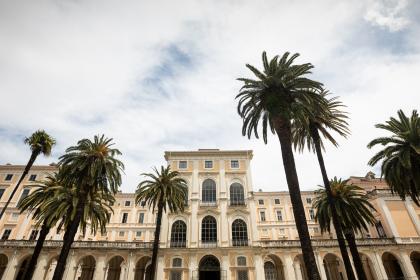
 Condividi
Condividi
The Galleria Nazionale di Arte Antica - Palazzo Corsini
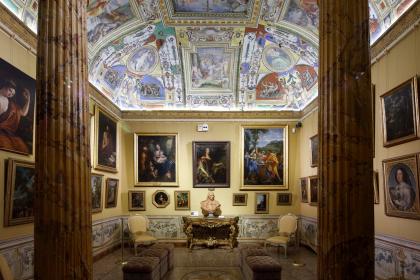
 Condividi
Condividi
The Botanical Garden of Rome
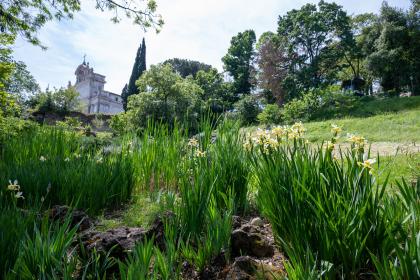
 Condividi
Condividi
Villa Farnesina
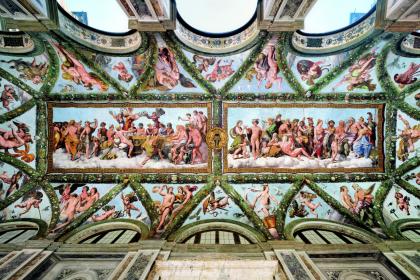
 Condividi
Condividi
The Basilica of Santa Maria in Trastevere
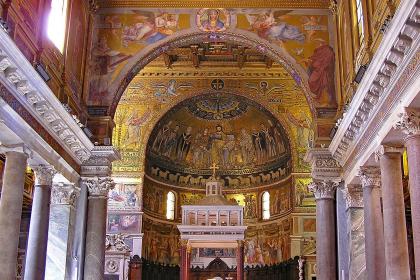
 Condividi
Condividi
Sanctuary of San Francesco a Ripa Grande
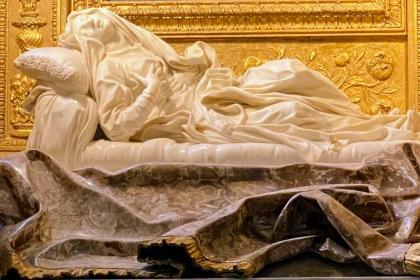
 Condividi
Condividi
Museum of Roma in Trastevere

 Condividi
Condividi
The Monument to Giuseppe Gioachino Belli
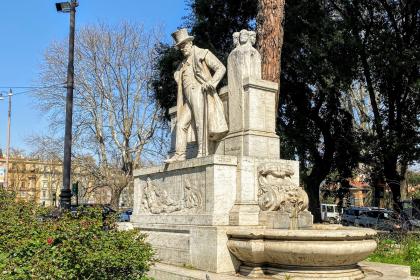
 Condividi
Condividi
Fontanone del Gianicolo (Mostra dell'Acqua Paola)
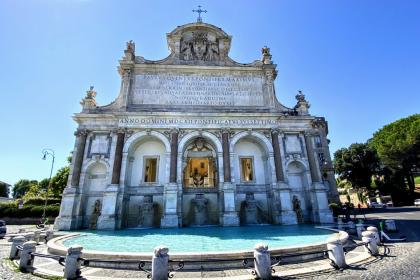
 Condividi
Condividi
Museum of the Roman Republic and Garibaldi Memorial
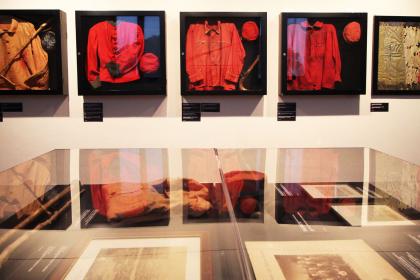
 Condividi
Condividi











































